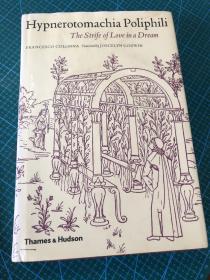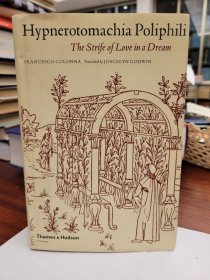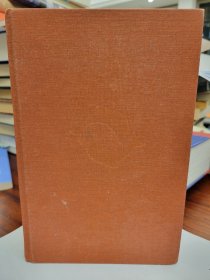
hypnerotomachia poliphili,Francesco colonna
¥ 985 九品
仅1件
作者Francesco colonna
出版社不详
出版时间1984
装帧精装
上书时间2022-12-08

Rare ArchiBooks书
- 在售商品 暂无
- 平均发货时间 暂无
- 好评率 暂无
- 最新上架
商品详情
- 品相描述:九品
- 商品描述
-
The Hypnerotomachia Poliphili was published by Aldus Manutius, the great Venetian printer, and is considered one of the most beautiful illustrated books of the fifteenth century. Its famous woodcut, a cross section of the round temple of Venus, was the first printed in Europe and, therefore, a milestone in the history of architectural representation. Note that below we see the half circle plan of the cutaway part of the building. By the early sixteenth century it became standard to depict a building in its three most important aspects-its plan, its cross and/or side sections and its elevations (full height, nonper- spective exterior views).
This strange love story of Poliphilus and Polia unfolds across a succession of fantasy landscapes, peopled with exotic processions and strewn with fragments of ancient sculpture and architecture. These highly imaginative locations and events are conveyed by a series of woodcuts that run through- out the text.
The love story was written by a Dominican friar who was concerned to keep his identity, at least tem- porarily, concealed. Instead of signing the book, he left a cryptic message to be spelled out from the ini- tial letters of the chapters. It reads: "Polliam Frater Franciscus Columna Permavit"(Brother Francesco Colonna greatly loved Polia).
相关推荐
-

poli ayction
八五品包头
¥ 5.60
-

INDUSTRIAL ORGANIZATIONCOMPETITION, STRATEGY, POLI
八品北京
¥ 168.00
-

Poli Delano GENTE SOLITARIA
七五品北京
¥ 5.00
-

Poliphili Hypnerotomachia Strife of Love in a Dream
九品杭州
¥ 622.00
-

Poliphili Hypnerotomachia: Strife of Love in a Dream
八五品杭州
¥ 499.00
-

Leon Battista Alberti's Hypnerotomachia Poliphili 寻爱绮梦
八五品大连
¥ 318.00
-

Urban Health and Wellbeing Programme (UHWB): Poli
全新广州
¥ 62.45
-

Urban Health and Wellbeing Programme (UHWB): Poli
全新广州
¥ 60.45
-

Urban Health and Wellbeing Programme (UHWB): Poli
全新广州
¥ 60.45
-

Urban Health and Wellbeing Programme (UHWB): Poli
全新天津
¥ 60.75
— 没有更多了 —












以下为对购买帮助不大的评价